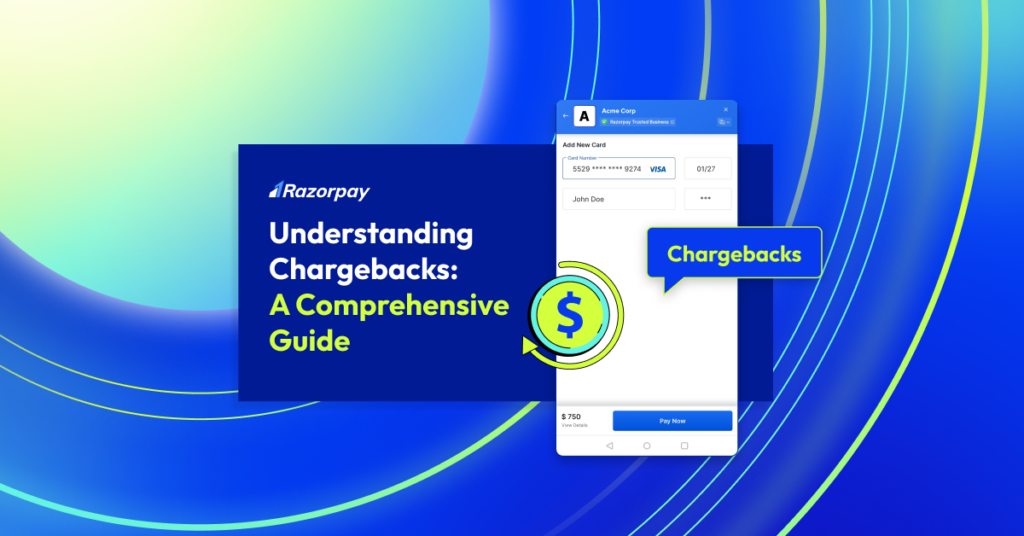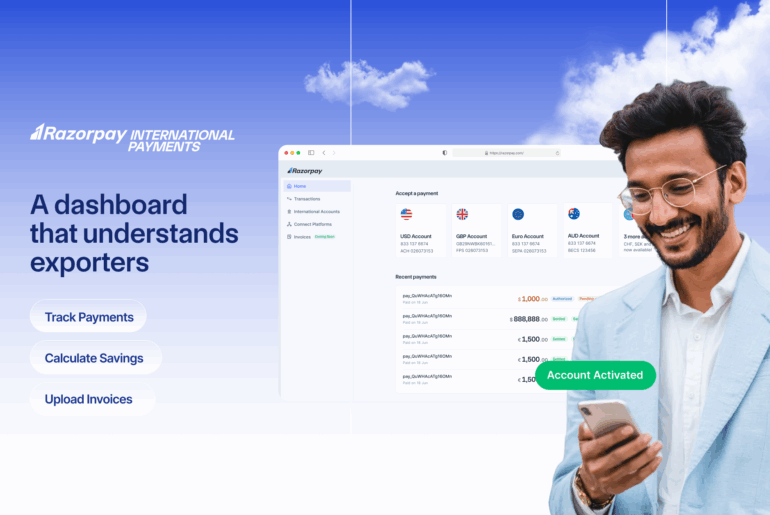Ever bought a pair of shoes online, only to find they never arrived? Or maybe your credit card was unexpectedly charged for a purchase you never made? A chargeback is the safety net that offers consumers recourse against these challenges. Chargebacks play a crucial role in maintaining trust and security within the payments ecosystem, and it is particularly vital in e-commerce, where the perceived risk of fraud looms large. However, the flip side of this coin reveals a harsh reality for merchants: chargebacks can be a costly and time-consuming ordeal. Here’s all you need to know about chargebacks.
What is a chargeback?
A chargeback is essentially a reversal of a transaction on a credit or debit card, initiated by the cardholder’s bank. It happens when the cardholder disputes the charge and convinces their bank that it was unauthorized, fraudulent, or otherwise invalid.
Chargeback vs Refund: What is the difference?

While both chargebacks and refunds can result in a customer getting their money back for a purchase, they are not the same and have distinct implications for both consumers and merchants. Here’s a breakdown of the key differences:
Refund:
- Initiated by the merchant, a refund is a straightforward process where the merchant returns the funds to the buyer, typically without involving the bank.
- Costs the merchant the original transaction amount, possibly including return shipping or restocking fees.
- Often due to returns, exchanges, cancellations, or simply customer dissatisfaction.
Chargeback:
- Initiated by the cardholder through their bank, a chargeback involves the reversal of a transaction.
- Costs the merchant the original transaction amount, plus chargeback fees and potential penalties. Additionally, the merchant may lose the product and incur administrative costs to respond to the dispute. For example, a $100 chargeback can snowball into $150-$180 with hidden fees & shipping.
- Usually due to fraud, billing errors, unsatisfactory goods or services, or merchant disputes that couldn’t be resolved directly.
Why Do Chargebacks Happen?

- Unauthorized Transactions: If a cardholder notices an unauthorized charge on their statement, they may initiate a chargeback to reclaim their money.
- Fraudulent Activity: Cases of identity theft or credit card fraud often lead to chargebacks, as the victim disputes the unauthorized transactions.
- Goods or Services Not Received: If a customer does not receive the promised goods or services, they may seek a chargeback.
- Defective Products or Services: Chargebacks can occur if the received products or services are significantly different from what was promised or if they are defective.
Who Gets Charged for a Chargeback?
The responsibility for a chargeback falls on the merchant. When a chargeback is initiated, the funds are taken from the merchant’s account and returned to the cardholder. Additionally, merchants may face chargeback fees, increased transaction costs. If chargebacks occur frequently, it can damage their reputation due to unreliability and increased risk perception.
How Does a Chargeback Work?
- Initiation: The cardholder contacts their bank to dispute a transaction, providing reasons for the chargeback.
- Investigation: The card issuer investigates the claim, contacting the merchant for supporting documentation.
- Resolution (Customer’s Perspective): If the card issuer finds in favor of the cardholder, the funds are taken from the merchant’s account and returned to the cardholder.
- Notification: The merchant is notified of the chargeback and may choose to accept or dispute it.
- Resolution (Merchant’s Perspective): Merchants can either accept the chargeback or dispute it by providing evidence that the transaction was legitimate.
The Hidden Costs of Chargebacks: Impact on Business Growth
Chargebacks are a complex issue with no easy solutions. While they play a critical role in consumer protection, their misuse can inflict significant pain on merchants. According to a survey, 33% of the customers said that if they face a payment decline, they wouldn’t shop with the business again. Chargebacks lead to direct and indirect costs in the form of revenue loss, chargeback fee, loss of gateway processing fee, operational costs, and network penalties etc. Razorpay estimates that chargebacks can cost merchants up to 2-3% of their international revenue. Fraud chargeback associated costs can quickly add up, and impact business growth. This often leads merchants to a difficult choice: prioritize aggressive fraud prevention at the expense of customer experience, or risk financial losses through chargebacks. Aggressive fraud prevention, though effective in reducing fraudulent activity and safeguarding against losses, may also inconvenience genuine customers and hinder business growth.
The key lies in finding the right balance. Advanced fraud detection systems can accurately identify fraudulent actors, minimizing friction for legitimate customers. An effective solution must strike a delicate balance between maintaining a positive customer experience and implementing robust fraud prevention measures. And that’s where we step in with our robust International Payments gsteway that helps businesses safeguard themselves against chargebacks.
Chargeback Protection with Razorpay

Chargeback Protection with Razorpay Shield offers a robust solution to one of the significant challenges in international payments – the threat of chargebacks. Leveraging a state-of-the-art ML-powered risk engine developed using extensive global proprietary transaction data, Razorpay Shield ensures comprehensive protection for businesses.
- Industry-leading precision: Up to 10% higher success rates, ensuring genuine customers aren’t declined.
- World-class ML-powered risk engine: Leverages global transaction data to effectively identify and prevent fraud.
- Zero chargeback liability: Shield covers all fraud chargebacks, eliminating financial losses.
- Reduced operational costs: No need to handle or dispute fraudulent transactions.
- Increased revenue: Up to 8-10% revenue growth through higher success rates and new revenue streams.
- Proactive protection: Razorpay Shield is like an insurance premium for your payments. It prevents revenue loss and safeguards your business’s financial health.
- Seamless integration: Integrates easily with Razorpay Standard Checkout for a smooth setup.
In conclusion, Razorpay Shield stands as a formidable asset within the realm of international payments, offering not just protection but also a pathway to prosperity for businesses. By seamlessly integrating advanced technology with a deep understanding of transaction dynamics, Razorpay Shield not only shields businesses from potential losses but also empowers them to explore new avenues of revenue generation. In a landscape where security and efficiency are paramount, Razorpay Shield emerges as a trusted partner, driving success and sustainability for businesses worldwide.



